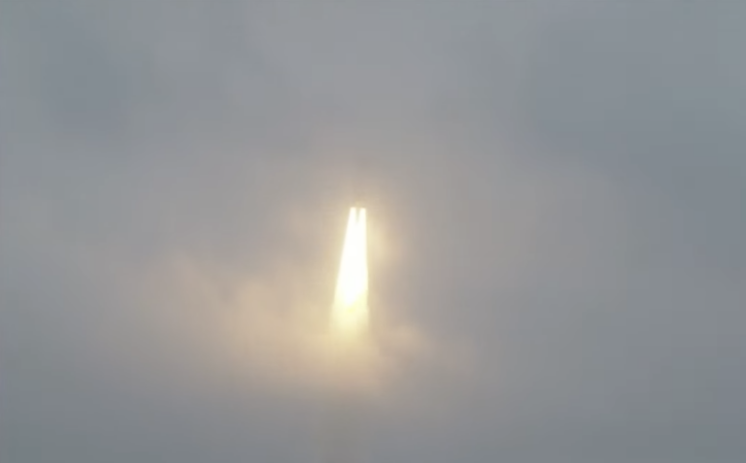Space Telescope Science Institute, Baltimore, MD -- Today, the James Webb Space Telescope started its journey to a location over a million kilometers from Earth, where it will start its science mission in roughly six months. "This is a day for the ages," said Ken Sembach, director of the Space Telescope Science Institute. "Science won't be the same after today."
Sembach said those words roughly an hour before the launch, well before any last minute glitches could have delayed matters, and long before the complicated series of events that would see parts of the observatory unfold from their compact launch configuration. After years of delays, and so much riding on these events, you might expect a greater sense of tension among those gathered here to watch the launch, but the people gathered at the Space Telescope Science Institute seemed remarkably relaxed. At least until you asked them how they were feeling.
And, so far at least, that confidence appears to be well placed. The launch countdown went forward without delay, and each step along the way—separating of solid rocket boosters, release of the fairing—went exactly as planned, and the rocket tracked exactly along the planned trajectory. Video from the rocket's second stage showed the telescope's solar panel deploy, and shortly after controllers here indicated it was fully powered.
What's to come
Scott Friedman, the Webb's commissioning scientist, went over all the additional hurdles that the telescope has to clear before it's operational, a milestone that's expected to take place in six months. Over the first few weeks, the sunscreen will be extended to its full width, and then the screen's multiple layers will separate and then be pulled to a tension sufficient to stretch them into their final form. Following that, a tower will extend the instrument package away from the "hot side" of the telescope facing the Sun.
On the hot side, there's a solar panel, communication equipment, and all the hardware needed to function as a spacecraft. These have to be kept separated from the infrared imaging equipment, lest the heat they generate swamp any signals in the telescope.
The cool side will start deploying after the sunscreen, starting with the small secondary mirror that's housed on booms extending in front of the primary mirror. The two wings of the primary mirror, folded back to fit in the launch fairing, will then extend, placing the primary mirror in its final configuration. During this time, a "momentum flap" will be extended to counteract the radiation pressure from sunlight.
On the cool side, a panel that acts as a radiator will extend, allowing the cooling of the instruments to start—one of the instruments will need to be at seven Kelvin to operate. Cooling to operating temperatures is expected to take 96 days.
Everything will be in its final configuration by about two weeks after launch. From there, the mirrors have to move a bit more than a centimeter to reach their final position. The motors that manage this also handle the precise control of the mirrors to fine-tune the configuration, so they can only move things very gradually. As a result, traversing that small distance will take the mirrors 10 days.
Once that's all complete, the controllers will start imaging isolated stars to make the fine adjustments needed to get the instrument in its operating configuration (though further adjustments to the mirrors can be made later).
So, lots of anxious moments to come, but significant hurdles have now been cleared. The Webb is in space, operating under its own power, and communicating with Earth.



3175x175(CURRENT).thumb.jpg.b05acc060982b36f5891ba728e6d953c.jpg)

Recommended Comments
There are no comments to display.
Join the conversation
You can post now and register later. If you have an account, sign in now to post with your account.
Note: Your post will require moderator approval before it will be visible.